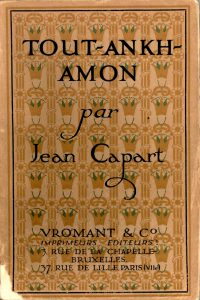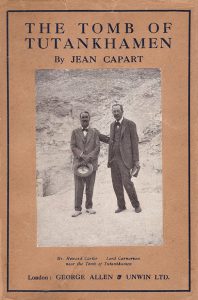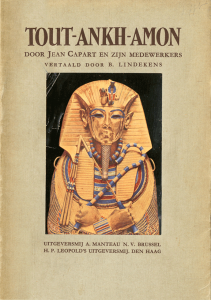The history of AERE
The history of the Queen Elisabeth Egyptological Association (AERE), formerly the Queen Elisabeth Egyptological Foundation.
The history of AERE
The Association Égyptologique Reine Élisabeth (AERE), formerly the Fondation Égyptologique Reine Élisabeth, was officially established on 1 October 1923, on the initiative of Belgian Egyptologist Jean Capart (1877-1947). The main event leading to the formation of the Association was the visit of the Belgian Queen Elisabeth to Tutankhamun’s tomb earlier that year, more precisely on 18 February 1923.
Capart was to take charge of the day-to-day management of the Society until his death in 1947. He was succeeded by his close collaborator Marcelle Werbrouck (1889-1959).
The aim of the Association was primarily to promote Egyptological and Papyrological research in Belgium. Over the years, the Society has grown into a scientific institution dedicated to the study of the history and culture of Pharaonic, Graeco-Roman, Christian and Arab Egypt.
Since its establishment in 1923, the seat of the AERE has been in the buildings of the Royal Museums of Art & History in Brussels.
Former directors:
• Luc Limme (director 2011-2023)
• Alain Martin (director 2002-2023, Secretary 2023-…)
• Herman de Meulenaere (director 1975-2011)
• Jean Bingen (director 1963-2002)
• Pierre Gilbert (director 1958-1973)
• Marcelle Werbrouck (Secretary 1923-1947, director 1947-1958)
• Jean Capart (director 1923-1947)
Bibliografy
– Bruffaerts, J.-M. 2013. ‘Bruxelles, capitale de l’égyptologie. Le rêve de Jean Capart (1877–1947)’. In S. Bickel, H.-W. Fischer-Elfert, A. Loprieno and S. Richter (eds), Ägyptologen und Ägyptologien zwischen Kaiserreich und Gründung der beiden deutschen Staaten: Reflexionen zur Geschichte und Episteme eines altertumswissenschaftlichen Fachs im 150. Jahr der Zeitschrift für ägyptische Sprache und Altertumskunde, Zeitschrift für Ägyptische Sprache und Altertumskunde– Beihefte 1. Berlin: De Gruyter: 193–241.
– De Meyer, M., Bruffaerts, J.-M., & J. Vandersmissen. 2024. ‘The Fondation Égyptologique Reine Élisabeth in Belgium and the Creation of National and Transnational Egyptological Research Infrastructures in the 1920s–1940s’. In T.L. Gertzen & O. Matthes (eds), Oriental Societies & Societal Self-Assertion: Associations, Funds and Societies for the Archaeological Exploration of the ‘Ancient Near East’. Investigatio Orientis 10. Münster: Zaphon, 141–166.
– Van de Walle, B. 1974. ‘Le cinquantième anniversaire de la Fondation Égyptologique Reine Élisabeth (1923–1973)’. Bibliotheca Orientalis 31(3–6): 194–197.
– Werbrouck, M. 1947. ‘Jean Capart et la Fondation Égyptologique Reine Élisabeth’. Chronique d’Égypte 22(44): 192–196.


